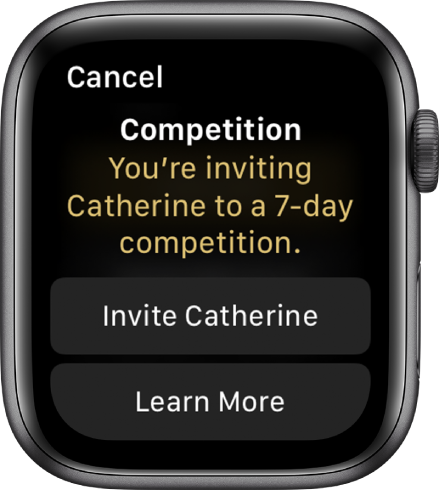Apple Activity
Behavior Change Intervention Strategy Critique
Application Purpose
Apple’s Activity app is an activity tracking system designed for the Apple Watch to promote an active lifestyle for its users.
Bring back that lovin’ feelin’ — Activity trackers are notorious for ending up in a drawer somewhere after the novelty phase has worn off. Being a new owner of an Apple Watch, I wanted to know if my watch would soon share a drawer with my FitBit. I conducted an intervention strategy audit to identify improvements that the Apple Activity app could make to increase long term usage and move users into the behavior maintenance phase.
Current Intervention Strategy
The primary intervention strategies used in the application are daily goal setting for the move, exercise, and stand goals. The user can change the move goal, but the system indefinitely sets the exercise and stand goals.
The system automatically tracks these behaviors and provides feedback on those specific behaviors by showing measurable facets of each of those goals (e.g., what type of exercise the user did and for how long). In addition, with the new iOS 13 upgrade, users can now track their activity trends over time.
Users can stay motivated with social support features by connecting with their friends (who also have an Apple Watch). They can share activity updates via text messages and compete in activity-based challenges.
Social comparison features are also supported by allowing users to view their friend’s daily activity progress.
Lastly, there are reminders. There are reminders to track an exercise when detected, and to motivate users to reach their goals.
However, the honeymoon phase ends quickly.
Apple’s Activity app could be informed by the Self-Regulation Theory (SRT) to continually move users from behavior change theory’s continued response phase to the behavior maintenance phase.
According to Rothman, during the initial response phase, users are most optimistic about their future expected outcomes. They also hope to see results quickly, which may set them up for trouble during the continued response phase.
While users may feel motivated during the initial response phase, there may be several relapses and reversals before changing their behavior.
This problem is compounded by the fact that the outcome they are expecting may take time (Rothman 2010). It is at this point, where users need the most support continuing to change their behavior.
Customize goal setting and self-monitoring, and help users problem-solve.
Recommendations
Apple should support their users during reversal experiences by allowing them to scale back their daily behavioral goals as supported by Scheier. Scheier recommends doing so because it will enable the user to remain engaged in their goal, and they feel more positive than they would otherwise (Scheier 2003).
Furthermore, users should be able to create their own outcome and behavioral goals. According to Rothman, users who were more intrinsically motivated by their goals were are more likely to overcome challenges because they have stronger self-regulatory (Rothman 2010). The system should also allow users to be engaged in their goals and allow for self-monitoring and problem solving to help users reach their goals.
1. Customize Goal Settings Users should be engaged during the goal-setting process and be able to set their own behavioral goals for anything that the Activity app is able to track–they should not be limited to system set goals. This will allow users to feel a sense of ownership and allow for scaling back.
2. Self-Monitor Behavior & Outcome Goals Users should be able to self-monitor behavior and outcome goals to increase their resilience. Engage users with customizable outcome goal setting and monitoring so they can stay motivated when outside influences interfere with their goals. For example, if a user’s outcome goal is to lose 5 lbs, they could set behavior goals for walking 15 minutes every day during lunchtime.
3. Enhance Problem Solving The system should leverage behavioral data to help the user problem solve any discrepancies observed between their progress and goal–this can also help users for when they inevitably relapse. Apple can implement self-diagnosis tools within the system to help users understand why and how they can overcome their challenges. While the new trends feature could be useful for this, it takes 180 days before any data is available to help users. Furthermore, the advice given is minimal at best and not customized to the user’s goals.
References
Rothman, A.J., et al. (2010). Self Regulation and Behavior Change: Disentangling Behavioral Intention and Behavioral Maintenance. In Vohs, K. D., & Baumeister, R. F. (Eds.) Handbook of self-regulation: Research, theory, and applications. The Guilford Press, 130-148.
Scheier, M.F., Carver. C.S. (2003). Goals and confidence as self-regulatory elements underlying health and illness behavior. In Cameron, L.D. and Leventhal, H. (Eds.) The Self-Regulation of Health and Illness Behaviour, London, UK: Routledge, 17-41.





